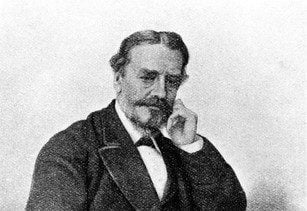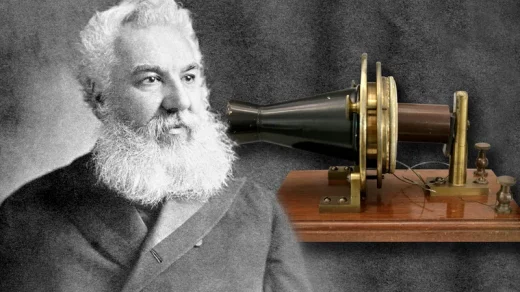An infamous Theft. The stone of Scone.
BY VICTORIA M. LORD
“I did it for Scotland”
Ian Hamilton

Criminal defense attorney Ian Hamilton masterminded the theft when he was a law student.
Sixty years later, Ian Hamilton would recall the most fateful night of his life as a cold one. On Christmas Eve of 1950, he and three other Scottish students set out from Glasgow, Scotland in two separate cars for the long trip south to London. The drive took about twenty hours: neither car had any heat, so it was the cold that lingered in Hamilton’s memory. For the rest of the world it was the daring act itself that made the strongest impression.
Although Ian Hamilton was studying law at the University of Glasgow, on that night, he jeopardized his future career by carrying out one of the most famous thefts in the history of England. Joined by Kay Matheson, Alan Stuart, and Gavin Vernon, Hamilton broke into Westminster Abbey and stole a 336 pound piece of red sandstone: The Stone of Scone.
Like any good burglar, Hamilton had scouted the Abbey some days before. These surveillance trips made the whole exploit possible. Although Hamilton had spent a lot of time reading about the Abbey, it was only when he visited it that he realized one of the side doors was made, not of strong oak, but of much softer pine. This door would allow the conspirators to enter the Abbey unseen and unheard after hours.
During one of these visits to the Abbey Hamilton had stayed past closing time and been discovered by the custodian. Assuming that Hamilton was a drunk who had lost his way, the custodian simply let him out of the building, giving him a coin in charity. Hamilton later claimed that taking the coin from the man was the only part of the whole adventure about which he felt guilty. After all, he hardly needed it: he had obtained fifty pounds (which would be worth about a thousand pounds today) from Scottish National Party leader John MacCormick. Oddly, despite this fact, MacCormick was never implicated in any part of Hamilton’s actions.
Once the four conspirators arrived in London, in the early hours of Christmas Day, the real work began. While Kay Matheson remained in one of the cars with the engine running so as to make a quick getaway, the three men pried open the pine door with a crowbar. Entering the Abbey, they headed straight towards the heavy oak Coronation Chair.
That’s when their difficulties began.
The Coronation Chair with the Stone of Destiny beneath it. Public Domain.

Commissioned by Edward I of England, the Coronation Chair was specifically built to hold the Stone of Scone. The Stone sits beneath the seat of the chair, in a small rectangular space closed off by a wooden grille. Somehow, none of the thieves had considered how heavy the Stone is and how awkward it would be to remove it from this small space. Wrestling with the grille, the men broke one of its wooden slats: in addition, they managed to break part of the oak chair itself. As they finally pulled the Stone free of the chair, it fell to the floor, landing on one of the men and breaking two of his toes. Worse still, the Stone itself split into two uneven pieces.
The resourceful instigator, Ian Hamilton actually viewed this as a piece of luck since the smaller piece was easier to handle. He lifted it up and hurried outside, placing it in the back seat of the Ford Anglia Kay Matheson waited in. Just as he reentered the Abbey, he heard a policeman outside. Hamilton raced back out, caught Kay in his arms and kissed her passionately. When asked by the police what they were doing there, Ian and Kay pretended that they were a couple searching unsuccessfully for a Bed and Breakfast for the night.
Once the policeman had moved off, Matheson drove away with the small piece of the Stone hidden beneath a blanket. Hamilton meanwhile, returned to find that his co-conspirators had fled. Undeterred, he removed his coat, and struggled to pull the Stone onto it. He used the coat to drag the Stone out the door and then heaved it into the trunk of the second car. At this point Vernon and Stuart reappeared and all three men drove away together.
The theft was discovered almost immediately and the nightwatchman of the Abbey called it in to the police. The authorities set up roadblocks on all roads out of London and closed the borders with Scotland and Wales. Having left the scene earlier, Matheson had a slight advantage in escaping. Although she encountered roadblocks, she was able to get through them. Certainly the fact that she was a woman traveling alone in the car must have helped: it was clear that more than one person would have been needed to carry out the theft. Evading the authorities, Matheson made it across the now closed border and drove directly to her family’s croft in Wester Ross.
The men would have been more conspicuous: rather than try to make it through roadblocks and border closures, they chose to hide the portion of the Stone they had carried away. They succeeded in driving into Kent where they buried the Stone in an empty field. Later, returning to dig it up, they found that a group of Romany had settled into an encampment on the site. The four conspirators did eventually recover this portion of the stone and transport it to Scotland. As soon as they crossed the border into Scotland, the three men doused the Stone in whiskey as part of a homecoming ritual. Then they had the stone secretly repaired.
Replica of the Stone of Scone on display at Scone Palace.

The entire escapade made headlines across the world. In the United States, a monument builder, E.B. Adams of Goldthwaite, Texas decided to carve a replica of the Stone of Scone. He contacted the U.S. State Department and the English ambassador and got permission to make this gift to the English people. Newspapers sent their reporters on wild goose chases in the hope that they would uncover the Stone’s hiding place. In January, 1951, Joseph Flanegan of the United Press International news service traveled to the island of Iona in Scotland, sure that the Stone was there. While his speculation made sense – many Scottish kings are buried on Iona and it holds a special place in Scottish history – he didn’t find the Stone. Flanegan did, however, report that the inhabitants of the island all “smile, at the mention of the theft.”
Meanwhile, back in England, the theft was met with some puzzlement. In 1950 most Scots were perfectly happy with their status within the United Kingdom: fewer than one percent of Scots supported the Scottish National Party. Every other political party garnered more attention, support, and favor, including the Conservative party. There was no nationalist movement in Scotland to speak of at that time. Despite this, the authorities were wary of stirring up nationalist sentiment: this made the search for the Stone awkward.
Luckily for them, aside from scouting out the Abbey, the conspirators had really not done a very good job. Many years later, Hamilton, who did in the end, become a criminal lawyer, confessed: “I’ve defended a lot of daft people during 30 years as a criminal lawyer but I doubt very much if I’ve defended anyone who was as daft as we were then.”
Unfortunately for the four students, the police were professionals. They visited libraries in Scotland, asking if anyone had shown a special interest in the Stone of Scone. They hit pay dirt at Glasgow’s Mitchell Library. In the course of doing all of his research there, Ian Hamilton had checked out every single book the library had on Westminster Abbey.
Slowly, the police discovered the names of all the conspirators. Kay Matheson’s family croft in Wester Ross was searched repeatedly for the Stone. While none of the plotters cracked even when questioned by the police, they decided that they had accomplished their purpose: raising awareness of what they saw as Scotland’s subordinate status within the United Kingdom. After some planning, the four contacted two Arbroath town councilors, D.A. Gardner and F.W.A. Thornton, known to be favorable towards Scottish nationalism.
Police carry the returned Stone on a wooden litter, from Arbroath Abbey, 1951.

Vernon, Stuart, and Hamilton arranged to meet the councilors at the ruins of the Abbey of Arbroath. On April 11th, 1951, the two councilors stood at the entrance to the Abbey, waiting. When the three students appeared, the councilors moved forward and helped them carry the heavy stone block in a wooden litter up the nave of the ruined Abbey. There they placed it on the floor where the high altar once stood. The students quickly left, and the councilors went directly to the police to report the presence of the Stone at Arbroath Abbey.
Meanwhile, the custodian of the Abbey, James Wishart, immediately locked the gates of the Abbey and stood guard over the Stone until the authorities arrived. The Stone was promptly removed to safety in Forfar police headquarters where it was locked into a cell.
Oddly, although Wishart, Gardner, and Thornton all testified that the men returning the Stone were reverent and bowed their heads as they placed the Stone, none of these witnesses could describe the men at all!
By the end of the short three and a half months in which the Stone had been missing, everyone involved had achieved their aim: the students raised the issue of Scotland’s independence in the minds, not only of their fellow Scots, but the whole world; the English authorities got their Stone back; and the Scots had the satisfaction of knowing that some of their own had finally gotten revenge for Edward I of England’s initial theft of the Stone of Scone.
While the Stone was returned to its place beneath the Coronation Chair, it no longer resides in England. Queen Elizabeth II of England and the I of Scotland, as she is properly titled, used the coronation chair and sat above the Stone in 1953. However, in 1996, the English authorities returned the Stone to Scotland on condition that they may ‘borrow’ it for any future coronation ceremonies. The Stone of Scone is now displayed with other Scottish royal regalia in Edinburgh Castle.
Years after the infamous theft, Ian Hamilton said: “When I lifted the Stone in Westminster Abbey, I felt Scotland’s soul was in my hands.”
After the return of the Stone to Arbroath Abbey, the four conspirators never met again.
Read more about sacred stones in The King’s Stone: Rocks and Ritual
Victoria Lord received her B.A. from Yale University in Archaeology and in Religious Studies. She received an M.A. in Medieval History from Columbia University. She writes frequently about Ireland, Scotland and Wales.




We heard this tale from our tour guide of the castle in 2008. A real Scottish exploit for sure. Thanks for sharing William. Allan
Still going strong, thanks Allan, and thanks for always stopping by.
What an amazing story!
awe thanks Mary xx